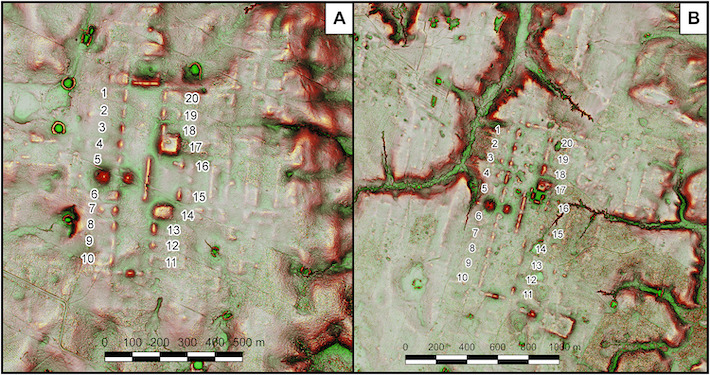 LJUBLJANA, SLOVENIA—According to a Science News report, lidar surveys of 415 ceremonial complexes built by the Olmec and the Maya along Mexico’s Gulf Coast have revealed that the structures were aligned on an east-west axis to mark the rising and setting of celestial bodies on particular days in a 260-day calendar. The structures have been dated from 1100 B.C. to A.D. 250. The earliest known written evidence of the Maya 260-day calendar dates back to about 300 B.C., although researchers suspected that the calendar had been developed before a system of writing had been created to keep track of it. Ivan Šprajc of the Slovenian Academy of Sciences and Arts, Takeshi Inomata of the University of Arizona, and Anthony Aveni of Colgate University explained that such a calendar would have allowed the people to coordinate seasonal farming activities and plan corresponding rituals. Read the original scholarly article about this research in Science Advances. For more on the Maya calendar, go to "Earliest Maya Calendar Date," one of ARCHAEOLOGY's Top 10 Discoveries of 2022.
LJUBLJANA, SLOVENIA—According to a Science News report, lidar surveys of 415 ceremonial complexes built by the Olmec and the Maya along Mexico’s Gulf Coast have revealed that the structures were aligned on an east-west axis to mark the rising and setting of celestial bodies on particular days in a 260-day calendar. The structures have been dated from 1100 B.C. to A.D. 250. The earliest known written evidence of the Maya 260-day calendar dates back to about 300 B.C., although researchers suspected that the calendar had been developed before a system of writing had been created to keep track of it. Ivan Šprajc of the Slovenian Academy of Sciences and Arts, Takeshi Inomata of the University of Arizona, and Anthony Aveni of Colgate University explained that such a calendar would have allowed the people to coordinate seasonal farming activities and plan corresponding rituals. Read the original scholarly article about this research in Science Advances. For more on the Maya calendar, go to "Earliest Maya Calendar Date," one of ARCHAEOLOGY's Top 10 Discoveries of 2022.
Lidar Survey Pushes Back Advent of Maya Calendar
